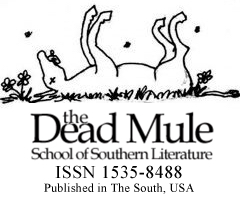Southern Legitimacy Statement: My father calls it Lou-Z-anna, Winnfield to be exact. Home of Huey Long and two other governors. The shotgun house he grew up in still stands.
Greens
On Saturday we go to 李敏’s (li3min3) parents’ house for dinner. This is one of the events that we all center our week around. For her mother it involves waking up at 6 am and getting to the vegetable market to beat the cavalcade of old ladies, inching forward one shuffle step at a time, to buy fresh grocery directly from the farmer at prices so low they feel like they’re being sold at cost.
For me the weekly meal means drinking five to ten ounces of 45% liquor with her father. Usually we drink 白酒 (bai2jiu3), but I’ve managed to coerce him into drinking some bourbon with me after I proved that the alcoholic content was worth his time. We drink the liquor with dinner and, as per Chinese custom, when the food stops so does the drinking.
Her mother lays out quite the spread when we come. I would feel guilty but it’s the only day of the week that I don’t have to cook dinner. We don’t simply eat the food she serves, we understand it. If she sees me enjoying a particular dish she becomes animated. She’ll say in dialectical Mandarin, “Do you know what this is?” It is unimportant if I know or do not know; either way she will continue: “This is called 苋菜 (xian4cai4; amaranth). It’s good for your eyes. Do you know how to prepare it?”
Sometimes 李敏 will interrupt this part because she thinks I’m bored. Sometimes she’s right; I’m indulging my mother-in-law because she probably spent four hours on a meal using recipes she has cultivated, amassed, learned and developed for the last forty years. I think it deserves a few cursory nods of respect.
Other times, however, I’m genuinely interested because I want to try the recipe on my own. I still can’t seem to get celery to cook through and retain its crisp when bitten into and I need her guidance. For a long time I was mistakenly frying Chinese sausage instead of defrosting it and then blanching it in water. And I’m still not able to wrap a decent dumpling but that’s mostly because I refuse to put in the hours of practice. Thankfully the cooking of peanuts, my first and everlasting love, is something I’ve finally mastered. I was interested in those dishes but nothing ever earned my attention more than radish greens.
○
I’m not from the South so when I say Louisiana I pronounce it like two first names (Louise-e-Anna) and not like my father who likes to shorten “Louis” to “Lou” and stick a “Z” in before “Anna”. My father speaks like he left Louisiana yesterday and not forty years ago. Whole phrases get mangled in his mouth, mired in the bayou of his esophagus.
My father claims, with some corroboration from my mother, that he taught her how to cook Black food. My mother is White and from Wisconsin so I’m sure she didn’t learn how to cook Black food growing up. And Paula Deen (boo!), the internet, and the proliferation of televised cooking shows weren’t around yet, so we have to accept the fact that my father, who in my memory cooked less than ten times in my childhood, actually was able to cook at some point.
When she felt up to it Mom would come home with brown paper bags filled with collard greens. Occasionally we ate mustard and turnip greens or a mixture of all three. Apparently in parts of the South people eat mixed greens that consist of the aforementioned varieties and sometimes kale and spinach. I wouldn’t know about that. In my mind greens means collard greens. The kids (my two older sisters and my younger brother and I) and my father would sit around in the living room stripping the large leafed collards from their stem. We would discard the stems and give the leaves to my mother.
Eventually she would take those leaves and add spices, peppers, vinegar and ox tails but never pork. My father outlawed pork in the house around my tenth year because of some report he had heard on the radio. Perhaps he considered it a luxury as well; it hadn’t been that long since all Black people could afford was fatback.
We ate collards with cornbread made from the blue, Jiffy brand box of cornbread mix. Usually the greens would be accompanied by rice and a ground turkey patty which resembled a Salisbury steak. Not quite Southern cuisine or Soul food or Black food, but not far off. After dinner we might watch sports on television or play dominoes. There were six of us so we would play “rise and fly” in which the player or players with the lowest or two lowest scores were forced to vacate their seats.
○
If you’ve ever eaten tempura you may have eaten daikon. It’s the grated white radish they serve with the tempura that soaks up the soy sauce and blends fantastically well with the deep fried vegetables. A daikon radish looks like a big white carrot, probably four times the circumference of your typical carrot, but it is less spired. Radish greens are the leaves that grow off the back of the radish. Much like turnip and mustard greens, the idea wasn’t to eat those leaves and so they were discarded thus becoming the food of poor folk.
The way my mother-in-law prepares radish greens isn’t completely different than how my mother cooks collards, but there are some key discrepancies. Peppers are used in both styles but the meat differs. A little pork, not even one or two ounces probably, is used in the radish greens. The collards are boiled for a time bordering on eternity whereas the radish greens are speedily cooked by braising, as are many leafy vegetables in China. Leaf size is another factor; my mother-in-law opts for very tiny cuts of radish greens, before they sprout into full-fledged leaves. And yet, the flavor profile isn’t that dissimilar as evidenced by me practically scooping the radish greens by the chopsticks-full into my porcelain bowl.
I asked my mother-in-law for the name of the vegetable and she reported that it was “萝卜yin” (luo2bo0yin?). She didn’t know the character for “yin” so she asked 李敏 who said it was “茵” (yin1) but her mother insisted that it was a character that had a “木” (mu4; the wood radical which is often in plant characters) somewhere in it. Later I looked it up myself and discovered that the vegetable is actually called 萝卜缨 (note that the third character is a ying1 and not an yin!). I then looked up collard greens and discovered that collard is a corruption of colewort, meaning wild cabbage that does not grow a heart. Greens, both radish and collard, are the afterthought, the remnants, the leftovers, the rejects of the vegetable world that are barely worthy of a standardized nomenclature.
○
In the last few years there has been some backlash over “Black history month menus.” First Questlove decided that a Black chef’s choice for a menu made in honor of Black history month was somehow racist. Later Wright State University rankled (some) Black people who were offended by the idea that (some) Black people eat collard greens and fried chicken and that they (the some who do not) were being inaccurately represented.
Here’s the problem though: Black people do eat fried chicken and collard greens. They eat other things as well, but if I went into a restaurant purporting to have Black food and they didn’t serve something in the neighborhood of fried chicken and collard greens I would think on their claim of serving Black food as dubious at best.
I understand the motivation to distance ourselves from these foods. They are irrevocably linked to stereotypes, bad health (well, not my beloved collards) and economic inequality. Let’s excuse the second one by simply saying that these foods should be eaten in moderation; fried anything isn’t healthy.
The other negative aspects are born of the food’s origin; why would someone eat discarded leaves unless they couldn’t afford “proper” leafy greens or “acceptable” edible roots? Or, worse yet, unless they weren’t allowed to eat the radish or turnips from which the leaves came? They wouldn’t. They didn’t. Black people ate collard greens cooked in various forms of pork fat because they didn’t have a choice. That’s why they ate chicken and hogshead cheese and chitterlings. It was the food of the poor, not exclusively Black, but exclusively poor which is not how anybody wants to be labeled. We don’t want our food to define us. We don’t want anything to define us or confine us or put us in a box to be categorized and laughed at or ridiculed.
To peer outside of the box is to see the ubiquity of the problem. It exists for all peoples. I hate when Chinese people ask me if all Americans eat hamburgers and I know some Chinese people who will insist that rice isn’t that popular here (which is categorically false). As an American I’m sensitive about being perceived as a fat McDonald’s addict; similarly some Chinese people don’t want to be thought of as poor rice-eaters. Never mind chicken feet or Chinese barbecue (where the meat is often said by the locals to be of ill repute) or steamed stuffed buns (包子, bao1zi0) bought from street vendors or the various other foods that are associated with the poor. Nobody wants to cop to eating these victuals. And this is in a country where the proletariat was (is?) championed! Now a decent portion of the populace is nouveau riche, a breed indiscernible from their American cousins, eating expensive cuts of steak and drinking imported wine and scoffing at the habits of poor people, an illness common the world over.
But so collard greens are this indestructible super food that escaped from the South and were carried by former slaves fleeing the plantations after the Civil War and the First World War and the Second World War; those pioneers rode the tide of the Great Migration preserving customs from their original milieu so that today one can go into Roscoe’s Chicken and Waffles on Pico Boulevard in Los Angeles and get collard greens and one can listen to Hollis, Queens born and bred rappers Run D.M.C. and hear that Mom is cooking collards come Christmastime. Maybe the reason Black people started eating collards and fried chicken was terrible and maybe some Black people don’t indulge in Soul food(!) and maybe some ignorant people will use anything as fuel for their bigotry, but does that mean we have to disown it? Sometimes a label can be limiting or sometimes it can be a link to the past which is vital for a people who had their roots all but eradicated.
Dave Chappelle once said, “They make fun of Latin people for eating – what you all eat? Beans? Rice? Corn? Listen, that’s not a reason to hate a motherfucker, all right? It’s funny, but it’s not a reason to hate.” Food shouldn’t be divisive. We should eat collards and fried chicken (on occasion), rice and barbecue, feet both pig and chicken, if we want to and we should be able to recognize that it was (is?) eaten by Black or Chinese or whatever ethnic people not that long ago. We should enjoy our foods without shame or apology, because all ethnicities come from humble beginnings and there’s nothing wrong with appreciating your origins.
○
When the food and drinking have been exhausted we clear the table and wash the dishes. I usually escape the latter task and sometimes my father-in-law and I sneak away for a cigarette behind our wives’ back even though our cover is blown when they smell us smoking. At some point they come find us on the patio announcing themselves with several loud, nagging exclamations about our health. Then 李敏’s mother makes some tea. She tells us where the tea is from, its price and its health properties. We understand it and having understood it we sit down at the table and divvy up a canister of coins that we will use to bet on the card game we are going to play. There are only four of us so no one has to “rise and fly.” And yet it still feels like home.




